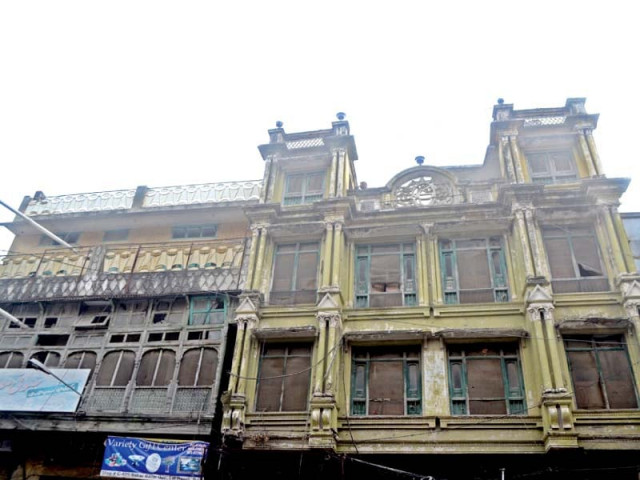345 structures declared risky
Notices issued to occupants to vacate dilapidated buildings by June 10

The Rawalpindi Metropolitan Corporation, Rawalpindi and Chaklala Cantonment Boards, the Auqaf Department and the District Council have declared around 345 buildings dangerous across the Rawalpindi district.
The civic agencies have issued notices to the occupants of these buildings, which are as old as 100 years, to vacate dilapidated structures ahead of the monsoon rains.
As the pre-monsoon season is approaching, the authorities concerned have issued red notices to the occupants, owners and tenants of the old multi-storey buildings, which have been declared dangerous, to vacate these dangerous buildings by June 10.
Read: Monsoon threat: Old Pindi buildings pose danger to residents
In these multi-storey buildings, six to eight families have been living on modest rents for the last 50 years. These buildings are so dilapidated that in heavy rains their roofs start dripping and in a minor earthquake the whole buildings start shaking and trembling.
These two to three-storey buildings date back to pre-Pakistan.
Areas in which these buildings are located include Bhabhra Bazaar, Urdu Bazaar, Trunk Bazaar, Old Fort, Shah Chan Chirag, Mohalla Niaryan, Raja Bazaar, Mohanpura, Dungi Khoi, Linda Bazaar, Chittian Hattian, Moti Bazaar, Ghazni Road, Pul Shah Nazar, Ganj Mandi, Qadeem Saddar, Lal Karti, Adara, Westridge, Tinch Bhatta, Nala Lei Kinara, Teli Mohalla, Waris Khan, Kartarpura, Bagh Sardaran and Lal Haveli.
There are also large ancient markets and shops in Mughal Sarai and Raja Bazaar.
These notices have also been challenged in court by two tenants. Many of these dilapidated buildings are also owned by the Auqaf department. The department receives meagre rent which ranges from Rs500 to Rs1,000.
In case any of them is vacated, the new rent, according to the market rates, can be up to Rs30,000. In the face of such low rents, their occupants are risking their lives to save money and not vacating these buildings.
In case of heavy rains, their occupants lock their houses and moved to relatives' houses in the city.
Usually, one or two buildings collapse during the monsoon each year.
The Auqaf department says it can repair the buildings only when they are vacated.
Published in The Express Tribune, May 20th, 2022.



















COMMENTS
Comments are moderated and generally will be posted if they are on-topic and not abusive.
For more information, please see our Comments FAQ